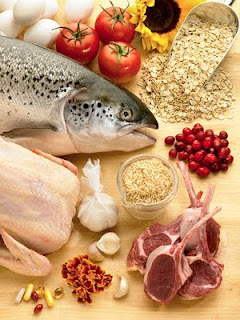| |
Emotional Freedom Technique
submitted by Allison Brooks
Invented by Gary Craig, the Emotional Freedom Technique--EFT--was first introduced to the public in 1993. The technique is based on the belief that negative thoughts and emotions create disturbances in a person's field of energy, resulting in the anxiety and depression. These imbalances of energy and emotions can lead to further imbalances of the immune system, resulting in sickness or other pains.
Sometimes, if these imbalances go unnoticed for periods of time, it can result in cancer. And since a diagnosis is stressful enough, negative thoughts can hinder healing. Many patients usually search for ways to control pain, anxiety and other negative occurrences without turning to the use of additional drugs. An increasing number of individuals are searching for natural and non-invasive treatments, even when no distinct cure can be offered.
The Process
As a type of complementary treatment, EFT is regarded by certain individuals as a form of psychotherapy. Practitioners try to assist the person to manipulate his or her body's energy field by training the patient to visualize a traumatic episode or memory in his or her life or while tapping on specific acupressure points. In this way, the Emotional Freedom Technique is similar to acupuncture and healing touch therapies, as well as other therapies that attempt to manipulate the energy field of the body.
Practitioners spend some initial time talking with the patient in his or her first therapy session, which allows the patient to speak of whatever concerns or issues he or she might have. Those suffering generally seek relief from anxiety and depression, although therapists state that numerous patients also hope the Emotional Freedom Technique will help relieve their pain.
After these issues are addressed, the EFT practitioner will proceed to show the patient the areas on which to tap and how to use the technique properly. Patients learn to make positive statements while tapping, such as "while I may sometimes experience depression, I wholly accept both my situation and myself." Some of the tapping areas may originate from the wrists and continue to the head, temple, eyebrow, under the eyes, nose, collarbone, chin, or underarm area. Proponents of the technique adhere to the belief that verbalizing acceptance of the problem will promote realignment of the energy field of the body.
Although the program's founder states that numerous individuals treated with EFT have shown improvement, there is not yet any scientific evidence to support this statement, or the claims that the progression of the cancer can be slowed through its use. However, there is no risk associated with the technique and there have been reports of cancer patients feeling better emotionally after participating in this treatment. Many doctors and patients with an unfavorable cancer prognosis, swear by EFT. They said the positivity EFT brought them after treatments, made them feel more acceptant of the conventional treatments.
The Process
As a type of complementary treatment, EFT is regarded by certain individuals as a form of psychotherapy. Practitioners try to assist the person to manipulate his or her body's energy field by training the patient to visualize a traumatic episode or memory in his or her life or while tapping on specific acupressure points. In this way, the Emotional Freedom Technique is similar to acupuncture and healing touch therapies, as well as other therapies that attempt to manipulate the energy field of the body.
Practitioners spend some initial time talking with the patient in his or her first therapy session, which allows the patient to speak of whatever concerns or issues he or she might have. Those suffering generally seek relief from anxiety and depression, although therapists state that numerous patients also hope the Emotional Freedom Technique will help relieve their pain.
After these issues are addressed, the EFT practitioner will proceed to show the patient the areas on which to tap and how to use the technique properly. Patients learn to make positive statements while tapping, such as "while I may sometimes experience depression, I wholly accept both my situation and myself." Some of the tapping areas may originate from the wrists and continue to the head, temple, eyebrow, under the eyes, nose, collarbone, chin, or underarm area. Proponents of the technique adhere to the belief that verbalizing acceptance of the problem will promote realignment of the energy field of the body.
Although the program's founder states that numerous individuals treated with EFT have shown improvement, there is not yet any scientific evidence to support this statement, or the claims that the progression of the cancer can be slowed through its use. However, there is no risk associated with the technique and there have been reports of cancer patients feeling better emotionally after participating in this treatment. Many doctors and patients with an unfavorable cancer prognosis, swear by EFT. They said the positivity EFT brought them after treatments, made them feel more acceptant of the conventional treatments.
Good resource: http://www.alternative-cancer-care.com/EFT_Cancer.html







